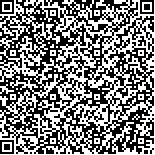| 引用本文: | 廖莉,许晓强,徐翔翔,蒋莹莹,韩旻,王刚.儿童患者药物咨询语音用药指导模式的应用研究[J].中国现代应用药学,2020,37(8):1007-1010. |
| LIAO Li,XU Xiaoqiang,XU Xiangxiang,JIANG Yingying,HAN Min,WANG Gang.Research on Drug Consultation Characteristics and Voice Guidance for Drug Use of Children Patients[J].Chin J Mod Appl Pharm(中国现代应用药学),2020,37(8):1007-1010. |
|
| 本文已被:浏览 2124次 下载 1090次 |

码上扫一扫! |
|
|
| 儿童患者药物咨询语音用药指导模式的应用研究 |
|
廖莉1,2, 许晓强2, 徐翔翔2, 蒋莹莹2, 韩旻1, 王刚3
|
|
1.浙江大学药学院, 杭州 310058;2.杭州市儿童医院药剂科, 杭州 310014;3.浙江大学医学院附属杭州市第一人民医院药学部, 杭州 310006
|
|
| 摘要: |
| 目的 探讨药品语音二维码标签用于儿童患者用药指导的可行性,降低药物咨询率,保障儿童安全合理用药。方法 收集药物咨询问题并进行统计分析,以此为导向,通过活码管理系统开发药品语音二维码标签,选择咨询人次多的药品进行试用并评价。结果 2017年1月-2018年12月期间共收集959例药物咨询问题,电话咨询为主,其中第Ⅱ类咨询问题类型(药物合理使用)>80%。试用药品克拉霉素干混悬剂、布洛芬混悬液、口服补液盐和蒙脱石散使用语音二维码标签的访问率分别为65.53%,58.32%,49.86%和48.44%,使用前后的咨询人次数和咨询率显著降低(P<0.01),语音二维码标签的患者满意度达97.50%。结论 基于"互联网+用药指导"模式开发的药品语音二维码标签适用于儿童患者,可行性高,可推广至更多特殊患者人群或其他药品。 |
| 关键词: 语音二维码 用药指导 药物咨询 儿童患者 |
| DOI:10.13748/j.cnki.issn1007-7693.2020.08.024 |
| 分类号:R954 |
| 基金项目:杭州市社会发展科研项目计划(20160533B34);浙江省中医药科技计划(2019ZA098) |
|
| Research on Drug Consultation Characteristics and Voice Guidance for Drug Use of Children Patients |
|
LIAO Li1,2, XU Xiaoqiang2, XU Xiangxiang2, JIANG Yingying2, HAN Min1, WANG Gang3
|
|
1.College of Pharmaceutical Sciences, Zhejiang University, Hangzhou 310058, China;2.Department of Pharmacy, Hangzhou Children's Hospital, Hangzhou 310014, China;3.Department of Pharmacy, Affiliated Hangzhou First People's Hospital, Zhejiang University School of Medicine, Hangzhou 310006, China
|
| Abstract: |
| OBJECTIVE To investigate the feasibility of voice quick response code for drug use guidance in children, so as to reduce the rate of drug consultation, ensure the rational drug application. METHODS Collected drug consultation questions and conducted statistical analysis. With this as a guide, the voice quick response(QR) labels was developed through the live code management system, and the medicine with more consultations was selected for trial and evaluation. RESULTS From January 2017 to December 2018, a total of 959 drug consultation problems were collected, mostly by telephone. More than 80% of the problems were belong to type Ⅱ(rational use of drugs). With the use of voice QR code labels, the access rates of clarithromycin dry suspension, ibuprofen suspension, oral rehydration salts and montmorillonite powder were 65.53%, 58.32%, 49.86% and 48.44%. The number and rate of drug consultants were decreased significantly(P<0.01). The satisfaction rate of patients with voice QR code labels was 97.50%. CONCLUSION The voice QR code of drug labels based on the "Internet+ medication guidance" mode is suitable for children. It is feasible and can be extended to more patients or drugs. |
| Key words: voice quick response code drug use guidance drug consultation children patients |
